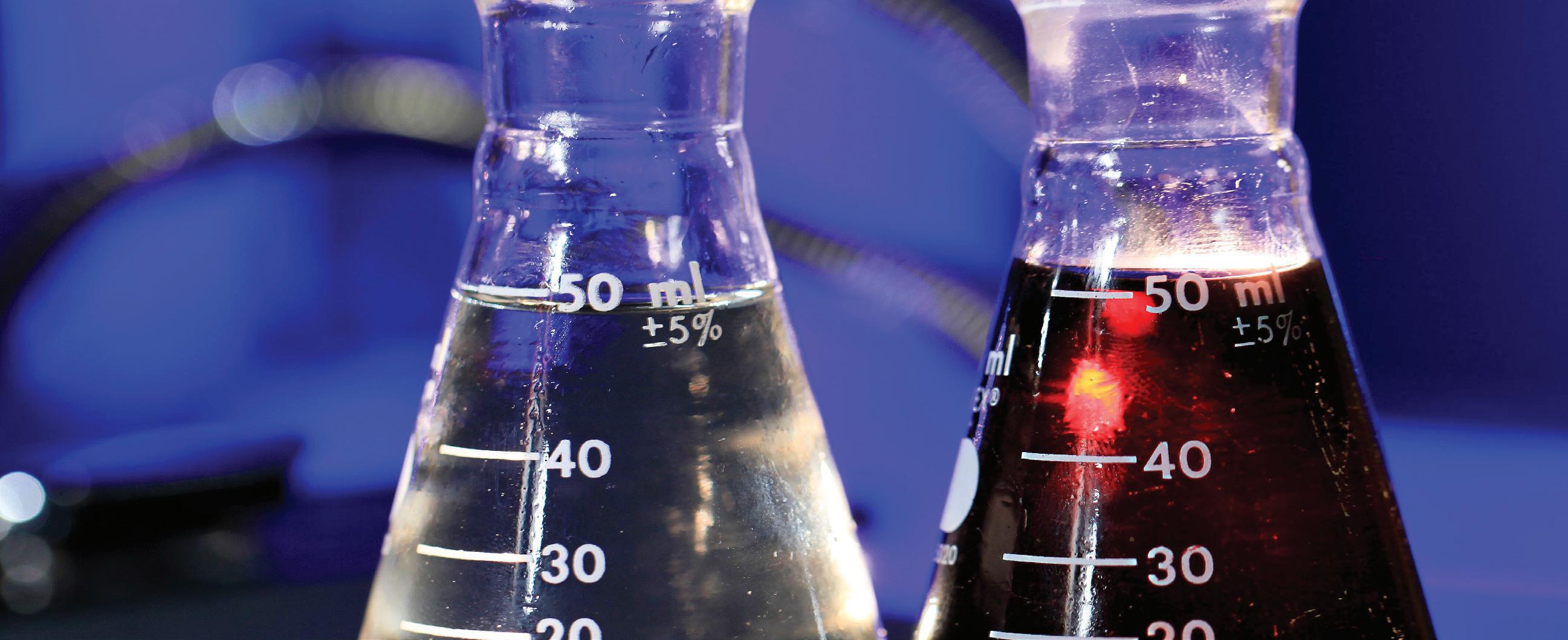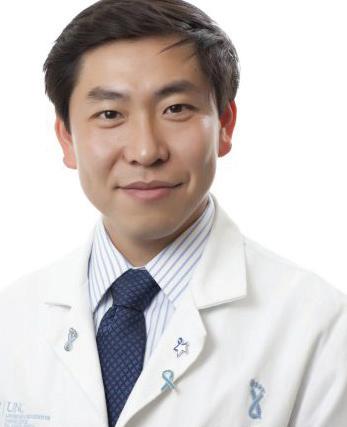
6 minute read
A Cure for Cancer: How to Kill a Killer
A Cure for Cancer: How to
Kill a Killer
Advertisement
Khushmi Shah


14 Cancer: the second leading cause of death in the United States. Even the sound of the word is feared. Imagine a world in which the disease is no longer an inevitable death sentence. At UNC-Chapel Hill, Dr. An drew Wang’s lab strives to do exactly this. Dr. Wang received his M.D. from Harvard Medical School and is currently an Associate Professor and Director of Clini cal and Translational Research in the Department of Radiation Oncology at UNC. He also co-directs the Carolina Cancer Nanotechnology Training Program. At the Wang Lab, researchers endeavor to apply nano technology to the development of cancer therapeutics in the form of drugs. The most recent major develop ments have been in boosting cancer immunotherapy, which is the body’s natural defense to fight cancer. Dr. Wang focuses his research on finding the most efficient ways to fight cancer. One of the primary therapeutic theories that caught his attention was the abscopal effect, which claims that when you treat something locally, you will see a similar effect on the whole body. For example, while radiation can be di rected to destroy tumors in a targeted region, its ef fect can also be seen throughout the rest of the body. About ten years ago, a new publication was released which described a patient receiving cancer immuno therapy as a treatment. While the patient responded initially, her body soon became resistant. As her me tastasis progressed, she was given radiation to a tumor next to her spine that was giving her pain. “The re corded result was phenomenal, as not only the tumor disappeared, but all of the cancer in the woman’s body went away,” says Dr. Wang. 1 This was the first major evidence of the abscopal effect and its efficiency. However, while the majority of tumors shrunk as a result of the treatment, Dr. Wang was compelled by the fact that some tumors still remained in the body. After reflec tion of the situation, Dr. Wang realized that he might be able to use nanoparticles to enhance the abscopal effect and advance cancer treatment. Using his prior knowledge from the field of nanomedicine, he devel oped an experiment that tested this question. Nanoparticles are microscopic particles that ex ist in the natural world but can also be created in a lab. One of their most important roles in medicine is their ability to carry drugs and participate in targeted therapy due to their unique structure. One can think of a nanoparticle as a sphere with unique chemical struc tural features that allow it to attach to specific targets. The Wang Lab is known for their use of nanotechnol ogy and chemical engineering techniques to advance
Figure 1: Schematic drawing of the mechanism utilized by nanoparticles to capture tumor antigens. Image courtesy of Dr. Andrew Wang. Dr. Andrew Wang
cancer research. For this particular study, Dr. Wang and his colleagues hypothesized that nanoparticles could be used to induce the abscopal effect and promote can cer immunity, as well as improve treatment response to immunotherapy. As seen in Figure 1, a tumor that is irra diated (radiotherapy) would first release antigens from the dying tumor cells. 2 Ideally, these released proteins would be captured by the body’s immune cells. How ever, the released tumor proteins are not very stimulating and as a result are difficult for the cells to take up. As a result, Dr. Wang claimed that nanoparticles could be created to resemble viruses that are sticky and could capture antigens. The attachment of antigens to the nanoparticles would make the complex more visible to the immune cells in the body, making it easier for the tumor antigens to migrate to the draining lymph node. of the greater visibility of the antigens due to them be ing attached to the nanoparticles, more antigens were taken up by dendritic (immune) cells and then drained out through the lymph node. The lymph nodes are structures in the human body that function as filters for foreign particles and cancer cells. Through these mul tiple studies, Dr. Wang and his colleagues were able to publish a paper proving how to develop efficient anti gen-capturing nanoparticles that can improve cancer immunotherapy and induce the abscopal effect. Not only do the nanoparticles enhance the uptake of the cancerous tumor proteins, but they also cause an im mune response throughout the entire body. The results of this study are “incredibly important for the advance ment of personalized medicine,” claims Dr. Wang. 1 This unique strategy exposes the immune system to various
Figure 2: Tumor growth curves of the mice treated with various nanoparticle. Image courtesy of Dr. Andrew Wang.

15 This can ultimately increase eradication rates and the abscopal effect in the body. Dr. Wang and his lab carried out various studies to determine the ideal structure of the nanoparticles that were the most effective in capturing the correct proteins. The different nanoparticles varied in their effi ciency to capture antigens depending on their size and type of surface structures. 2 PLGA and Mal nanoparticles were proven to be the most efficient in capturing the most protein, so they were used to further the experi ment. Then, to test whether these nanoparticles could improve immunotherapy, the lab employed a mouse model. Mice bearing bilateral tumors underwent radia tion and treatment on one side, while the other side was shielded from any radiation. It was seen that the nanoparticles were able to significantly improve im munotherapy and the abscopal effect, as seen in Figure 2, since tumor growth decreased. 2 Another study was carried out to determine how the nanoparticles enhanced the efficacy of cancer immunotherapy. Rho damine, which is a dye, was used to track the particles and their path in the body after radiotherapy. Because proteins from tumors, which are specific to each person. After this amazing development in the field of medicine, Dr. Wang now hopes to make an impact on real people:. “I feel that if I want to truly measure my self and say that I made a difference, I need to make an impact. Clinically, I treat patients and I see an impact that way, but I’d like to actually see my research taken to a larger scale.” 1 Dr. Wang already has a head start on his goals. In December of 2019, a startup company was launched whose purpose is to take the work done in lab and translate it to an actual product for use in clinic. This is just one of Dr. Wang’s many achievements, and there is a lot more to come from the Wang Lab. The future for cancer research is bright and on the verge of becoming even more efficient.
References
1. Interview with Andrew Wang, M.D. 01/31/20. 2. Min, Y.; Roche, K.C.; Tian, S.; Eblan, M.J.; McKinnon, K.P.; Caster, J.M.; Chai, S.; Herring, L.E.; Zhang, L.; Wang, A.Z.;, et al. Nat Nanotechnol. 2017, 12(9), 877–882.










